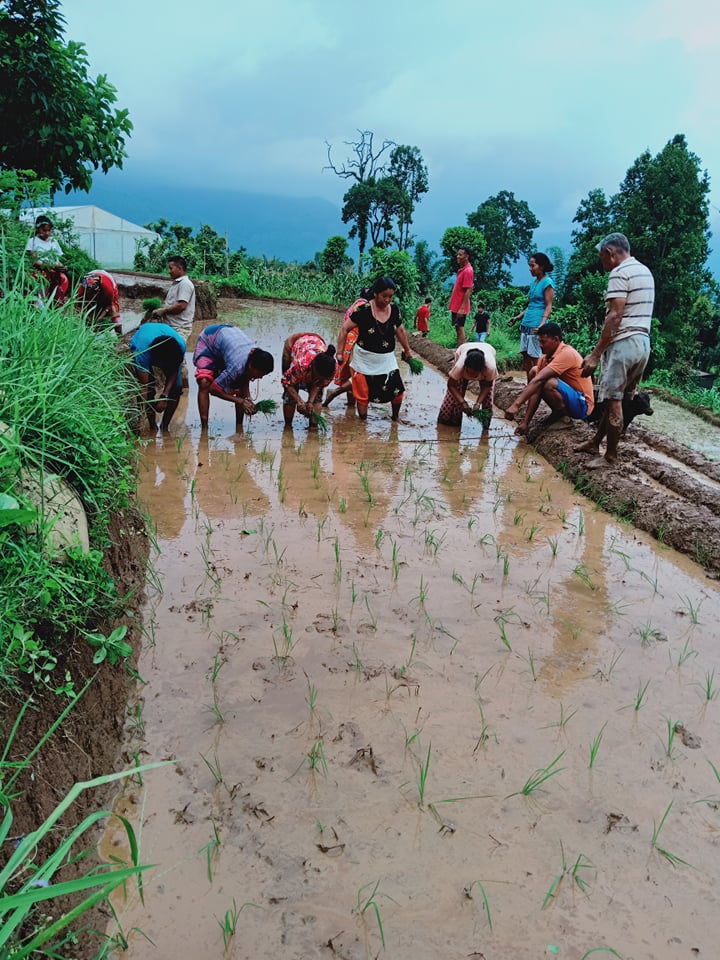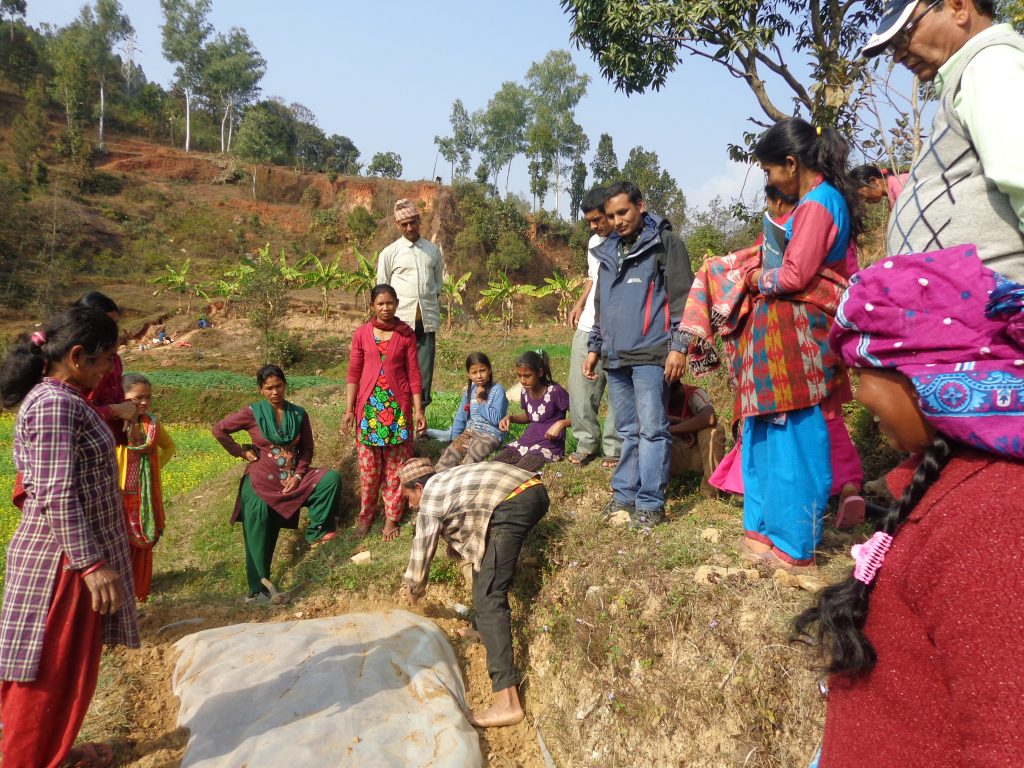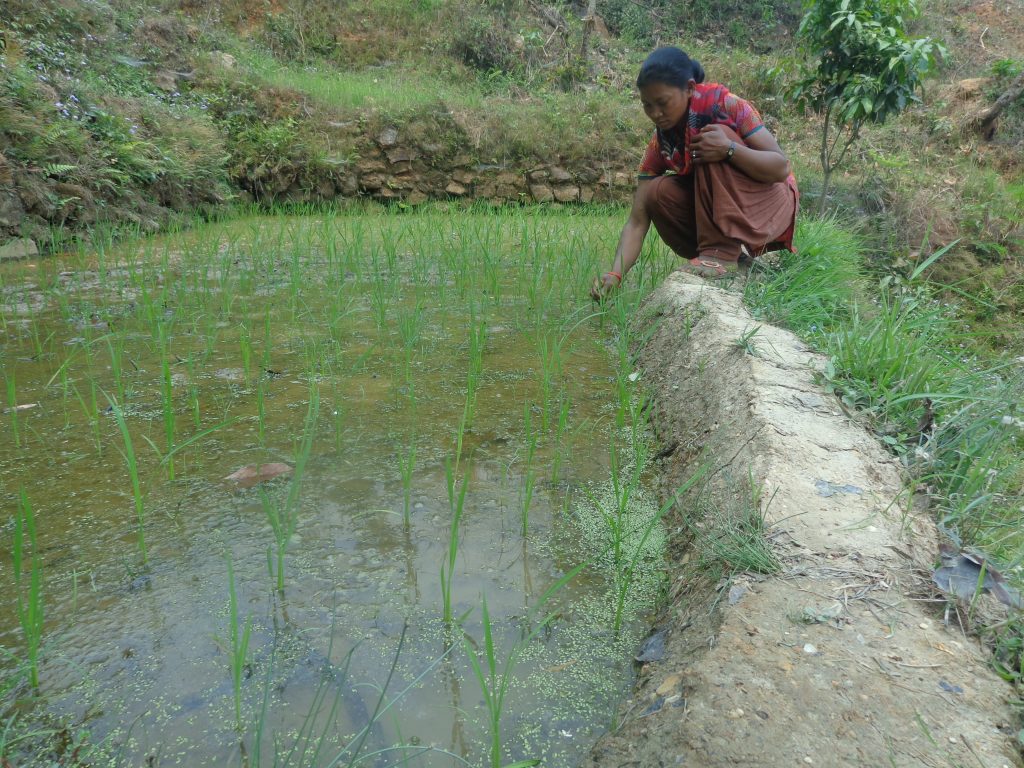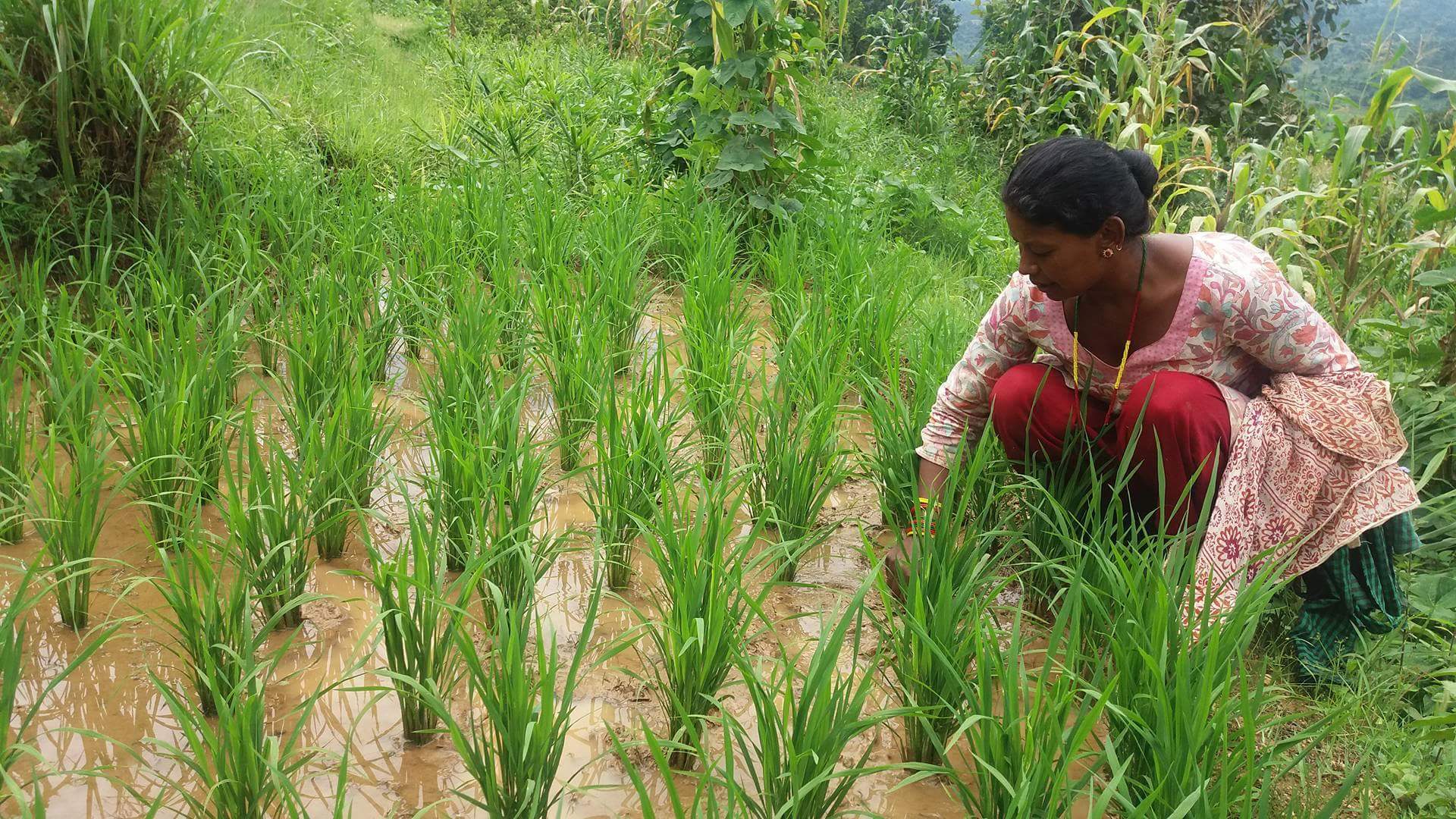For all her adult life, Shanti Rai, 37, only knew one way about how to plant rice. Every year around April, she and others from her village in Mandan Deupur in Karve used to assemble and plant saplings in a field full of water.
But, in 2016, things changed. Along with a small group of people from her village, she learnt a different way to plant saplings in her paddy field. The new system would reduce water requirements, increase land productivity, and promote less reliance on artificial fertilisers, pesticides, herbicides, and other agrochemicals.
“This new technique is a bit tough in the start, but the rewards are quite evident. For someone who doesn’t have a lot of lands, this is great as the output is a lot more too,” says Rai.
The technique she is talking about is called the system of rice intensification (SRI). The SRI is a farming methodology aimed at increasing the yield of rice. Developed in 1983 by Henri de Laulanié in Madagascar, the SRI is a low-water, labour-intensive method that uses younger seedlings, singly-spaced and typically hand-weeded, with special tools.
Using this technique, farmers in various parts of Nepal have been planting paddy and have found visible differences compared to the traditional style. However, despite its success, this method is still not used all over, Nepal which, during a time of water crisis, could be very beneficial.
SRI’s entry in Nepal

The SRI method though is not new. It has been in practice in Nepal since the late 90s. One of the pioneers of the technique in Nepal, Rajendra Uprety, says it was mostly a hit and trial during the first phases. As the behaviours of the crop depended on conditions, it took them a few years to get it right.
“We knew a lot of things based on earlier research. But, we didn’t know the right time to plant the seedlings and the amount of water we needed,” says Uprety, who is now a senior agriculture development officer at the Province 1 Ministry of Land Management, Agriculture and Cooperatives.
In 2007, Uprety showed the SRI technique was possible in Nepal as paddy yield in his farm in Morang doubled. That paved the way for further trials, after which this technique was tested all over Nepal, even in remote areas like Jumla and Humla. Realising that this did not take up much water, the Department of Agriculture then started awareness campaigns while aid organisations also stepped up their efforts to promote it as they saw visible changes.
That is how this technique reached Rai and others in Mandan Deupur. In 2016, World Neighbours, a non-profit organisation working mostly with small-scale farmers in coordination with local Agriculture Knowledge Centres gave training to farmers of Mandan Deupur. What started with only a few participants is slowly increasing as people are seeing the difference in water consumption and yields.
“Only five of us started it then, but slowly a lot more people joined in. Currently, there are over 10 households in my village that are using the SRI method to plant rice,” says Rai.
Increasing interest

Like Shanti Rai, Anita Rai is also using the SRI method to grow rice. Having seen Shanti grow rice in her small field and get better output, Anita learnt the technique and has been reaping the rewards of the technique.
“We started in a small space to test it. But, now, it’s been a few years that we have been doing it in larger land. We would still continue to do it in the traditional way, but the output from this method is far better than the traditional way,” says Anita.
In the SRI method, farmers transplant young, single seedlings, spacing them widely in a grid pattern. They are also asked to keep the soil moist and fertile, but not flooded, enhancing them with compost and other sources of organic nutrients, doing regular and early weeding that aerates the soil, and incorporating weeds into the soil to decompose.
Since there are a lot of criteria, people usually do not enjoy doing it, says Uprety.
“There will always be sceptics and it’s mostly the old generation who think the traditional way is the right way. They think that it takes a lot of time, but it’s only in the initial stages,” he says.
Srijana Karki, World Neighbours’ Regional Director for South Asia, echoes Uprety and adds her organisation did not get much participation when it started its project in Kavre.
“People don’t like change. When we approached people of Kavre, people looked interested, but on the day of the training, only seven people turned up which was quite disheartening,” says Karki. “But, there seems to be a great interest among more now.”
Coping with the crisis

At a time when water sources are depleting, the method has come as a boon for the people of Nepal as it does not use as much water. The SRI method makes it possible to increase production by 30% to 50% by using less water and limiting the use of fertilisers. Farmers like Shanti Rai and Anita Rai say using this technique has helped as they do not have an abundant source of water.
“People who have enough water are still doing it the traditional way,” says Shanti Rai.
The main thing that put people off initially was the way in which plantation was done. According to the SRI method, farmers can only plant one single seedling once compared to a bunch that Nepali farmers normally plant. Plating these saplings in a 25 centimetres’ grid was also new to everyone present there and many did not think it would work.
“It was weird and we didn’t really think it would work. We also had to take care of the soil a bit more, and clear out the weeds, which, at the time, we thought was a hassle. But, we were pleasantly surprised at how the yields came out to be,” says Shanti Rai.
World Neighbours’ Karki says the farmers’ reservation about the method was justified and having to take care of the crop a bit more was what put a few people off. But after one season, they started to see that the output increased and that invited more people into the programme.
But, the method is not used all over Nepal. Uprety says it is hard to implement it all over Nepal because both the people and the government are not as interested.
“It’s just how things work here. Priorities of everyone are different. But, this works and we’ve proven it. Now, what we need to do is use mechanisation and make this even easier in the plantation and weeding process,” he says.
That said, he says most areas in Nepal must have tried it but stopped practising it because they failed at the first attempt.
“For many people, if they don’t grow rice, they don’t get to eat, which is why it is hard to hit and trail. That is why we need more personnel who can train these people because, at a time when water sources are depleted, we need this technology more than ever.”
Photo: World Neighbours





















